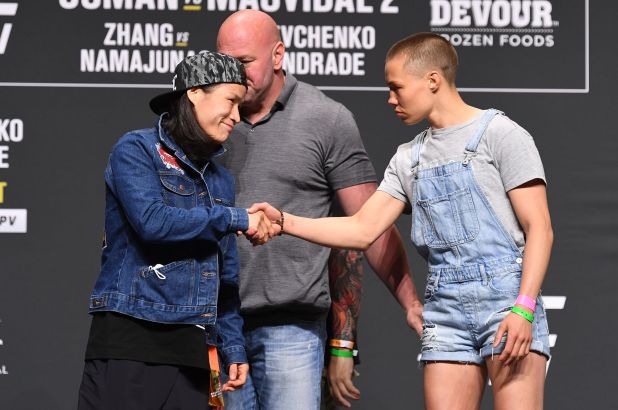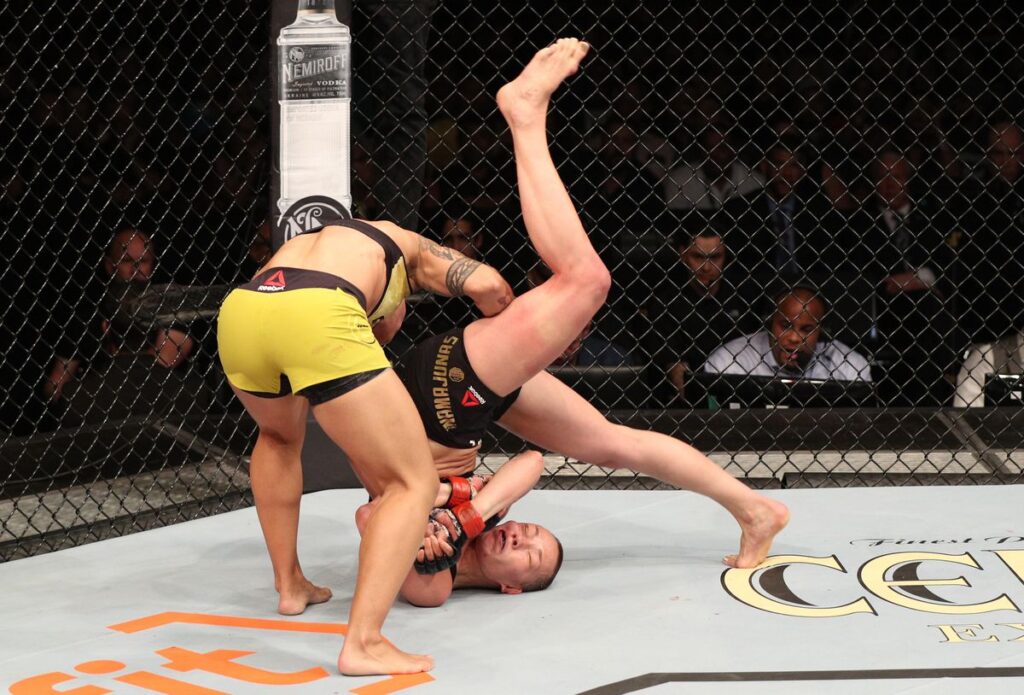UFC 261: Thorn of the Rose

UFC 261 offered many storylines: The first two fights of the main card ended with sickening lower body injuries, Valentina Shevchenko continues to look superhuman, and Kamaru Usman sent Jorge Masvidal’s consciousness into another galaxy.
However, my focus is on the second of the card’s three title fights: Zhang Weili vs Rose Namajunas.

There’s no telling this story without praising Zhang Weili. As the first Chinese UFC champion, Zhang is characterized by her humility and relentless pursuit of improvement. These qualities shined in her historic title defense against a perfect adversary in Joanna Jedrzejczyk. Equal parts obnoxious and formidable, Jedrzejczyk brought Zhang to the furnace—a place where legends are forged and lesser fighters melt. Many popular outlets considered their bout to be the fight of the year. Atop it all was the humble woman from Hanlan.
In her second defense, Zhang Weili found herself a 2-to-1 favorite against challenger and former champion, Rose Namajunas. At 31, Zhang was Namajunas’ senior by three years. With a pro MMA record of 21-1, Zhang’s winning rate (WIN%) far outpaced that of Namajunas’ 9-4 standing. Furthermore, Zhang savagely disposed of Jessica Andrade in the first round, who had (T)KO’d Namajunas in 2019.

Stir the surface-level analysis, add a pinch of recency bias, and wham! We have a steaming pot of inflated betting odds.
A deeper dive into the numbers reveals the truths that preceded the supposed upset. Despite Zhang’s lengthy resume, it appears somewhat hollow. The WIN% of her opponents ahead of the Namajunas bout was a middling 68%, with 52% of the lot owning a losing record or carrying less than six pro MMA fights. Compare this to Namajunas’ opponents’ WIN% of 84%, and only 36% having losing records or less than six fights.
The reality is that Zhang, regardless of her lengthy resume and champion status, was more of a mystery than the challenger. Her lone run-in with truly elite competition came against the aforementioned Jedrzejczyk: a fighter technical enough to exploit gaps in Zhang’s approach, but too impotent to translate it into a finishing sequence. As we now know, Rose would capitalize on Zhang’s vulnerability to the left high kick, a technique Jedrzejczyk landed twice.
Namajunas winning by (T)KO or submission (double chance) was a +330 on FanDuel the day of UFC 261. In layman’s terms, it was deemed an unlikely outcome. Afterall, it was Zhang who garnered the reputation of a violent finisher and explosive athlete. It was she who amassed that bubbling growth beneath the forehead of Jedrzejczyk. And it was Namajunas’ 20% Loss by Finish Rate (LBF%) that substantiated her susceptibility to the ferocity of Zhang.
But what if Zhang isn’t the knockout artist she’s heralded to be? That’s the question I asked as the Chinese sensation prepared for her second title defense. After all, her Finish Rate (FIN%) amounted to just 40% through her first five UFC fights, a far cry from the 88% (FIN%) she carried through her bouts in Kunlun Fight MMA and Top FC. Furthermore, the acclaimed striking power of Zhang wasn’t supported by her UFC knockdown rate (KD%).
| Rose Namajunas | Zhang Weili |
| UFC FIN%: 57% | UFC FIN%: 40% |
| KD%: 0.6 | KD%: 0.3 |
Meanwhile, Namajunas maintained a 57% FIN% in the UFC while doubling Zhang’s KD%. The data definitively marked the Lithuanian-American as the more tested and lethal fighter. A brief inspection of Namajunas’ fight log relieved further concerns of durability. Her two losses by finish came via rear naked choke as a 21-year-old, and from the Andrade slam (T)KO. She hasn’t lost by submission since and has never been felled by strikes in her professional career.
There was certainly room for a trained eye to observe the nuances of each fighter’s technique and see a pathway to victory for Rose Namajunas. Scraptitude’s data is merely an objective numerical representation of what is happening. In this case, it helped separate performance from narrative, the latter of which serves as a greasy overlay to our perception, obscuring accuracy and consistency.




